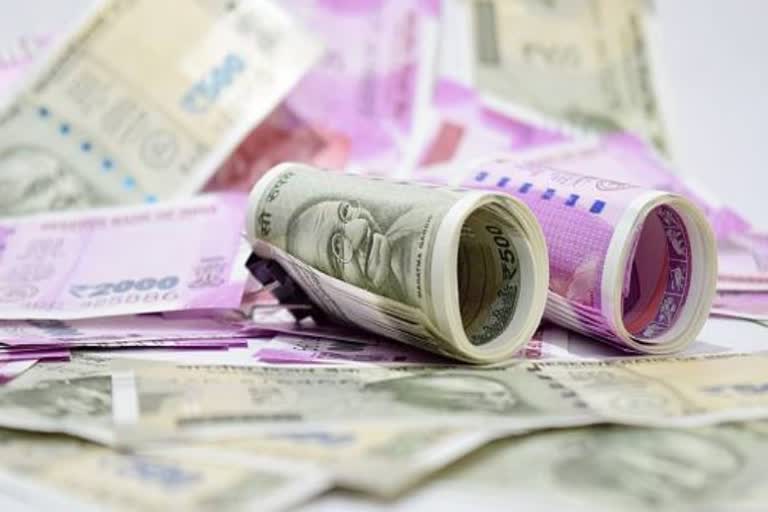Hyderabad: Slowdown..Economic Recession..Trade Wars..Deglobalization..Discussions about these issues are omnipresent these days. There is worldwide anxiety about current economic situations. Our country has no exception.
India is lagging in many sectors like automobile sales, railway freights, domestic airlines, basic amenities, imports, industrial production, ease of loans, employment creation.
Scary trade wars added fuel to the misery. The President of United States has initiated unprecedented trade wars. The USA is levying heavy tariffs on imports from China. The situation is grim in European countries too.
Economists were optimistic about the role of India and China in uplifting the world economy. Both the nations played a crucial role in 17th and 18th centuries. By 1600, the combined share of India and China amounted to 51.4% of the world’s GDP. By 1750, the situation was reversed. Times started changing. Seeing the growth run of Japan, Southeast Asian countries and India-China during the 1950s, historians have estimated that Asia would become the world leader.
Will the current low growth numbers be proven wrong? Or are these just temporary hiccups? Can the governments do anything to correct the situation? Will the natural laws of rise and decline plague economies also? These are the questions bothering everyone.
What is recession?
In general terms, the Gross Domestic Product (GDP) is equal to the value of goods and services produced in the country. Reduction in GDP growth rates in two consecutive quarters is the general definition of recession.
India’s GDP was 5.8 during the first quarter of 2019 while it fell to 5 during the next quarter. If the third quarter registers lower growth, it can be concluded that recession has enveloped all the sectors.
Even if the GDP falls by 1%, the impact is pronounced on all walks of life. Recession usually lasts for years. The effects of the 2008-09 recession are still being felt. Drop in consumption, large scale unemployment, greater supply than demand, fall in prices, salary cuts along with hopelessness about future are the main signs of recession.
Great Depression
During depression, all the signs of economic slowdown are amplified. During 1929-1940, the Great Depression shook the global economy. Although the production was high, people were neck deep in poverty and couldn’t afford anything.
American stock markets hit an abysmal low. Shareholders lost billions of dollars. Unemployment rate exceeded 25%. Ten years of recession and successive six years of World War II wreaked havoc. People started doubting the concept of development. The surprising fact is that this recession led to new growth. From then on till 1973, the economy grew at an excellent pace. It was a golden era. But the oil producing countries interrupted this growth. In 1973, oil production was reduced, and prices were hiked effecting America and other developed nations.
Asian Financial Crisis
The crisis in Southeast Asian nations in 1997 had negative impact on the world too. Huge loans and investments from first world nations pushed Southeast Asian nations into heavy debts. The first crisis was recorded in Thailand. This created panic in the markets, and the foreign investors withdrew investments. Government treasuries were emptied. Although the situation was corrected to some extent by International Monetary Fund, it took years to revive the markets.
Signs of Recession
- The fear of another global recession stems from the seven signs economists have spotted. China-US trade war that started 18 months ago with increased tariffs on iron products
- Crisis in the economy of USA that started a while after Trump took charge as the President. Consecutive drop in growth rate for two quarters in Germany
- Debt crisis in China leading to the lowest growth rate in 30 years
- Britain’s woes after Brexit are impacting all nations in the European Union
- Argentina, Iran, South Africa, Turkey and Venezuela are facing the worst economic crisis
Economists consider economic slowdowns and crises as inevitable events. Investments in major markets are made by private individuals and organizations. It is not easy to estimate people’s expenditure and consumption capacities. Production is made on basis of general assumptions. Overproduction is bound to happen in most cases.
If a company sells a product for competitive price, other companies will be affected. It is impossible to predict withdrawal of funds from banks as those actions are unmonitored. The foundations of these instabilities are a part of a free market economy and they become a threat to its very existence at times.
John Maynard Keynes came to the fore as a saviour during the Great Depression of 1929. He suggested that markets should not have total control over economy and that the governments should fund various schemes in order to prevent recessions. Keynes’ principles have encouraged the governments to introduce financial incentives. His theories have helped economies recover during slowdowns but could not prevent recessions altogether.
USA was the centre of Globalization at one point of time; but, now because of the President Donald Trump, there are signs of deglobalization. Threatening to part from the World Economic Forum, hasty comments about India and China, withdrawal from Paris Agreement on Climate Change-all these are signs of deglobalization.
It is high time, the global policy makers should come together and take adequate measures to reverse the current slowdown and help in building a prosperous society.
Read more:Infra funding will start post-task force report: Nirmala Sitharaman



